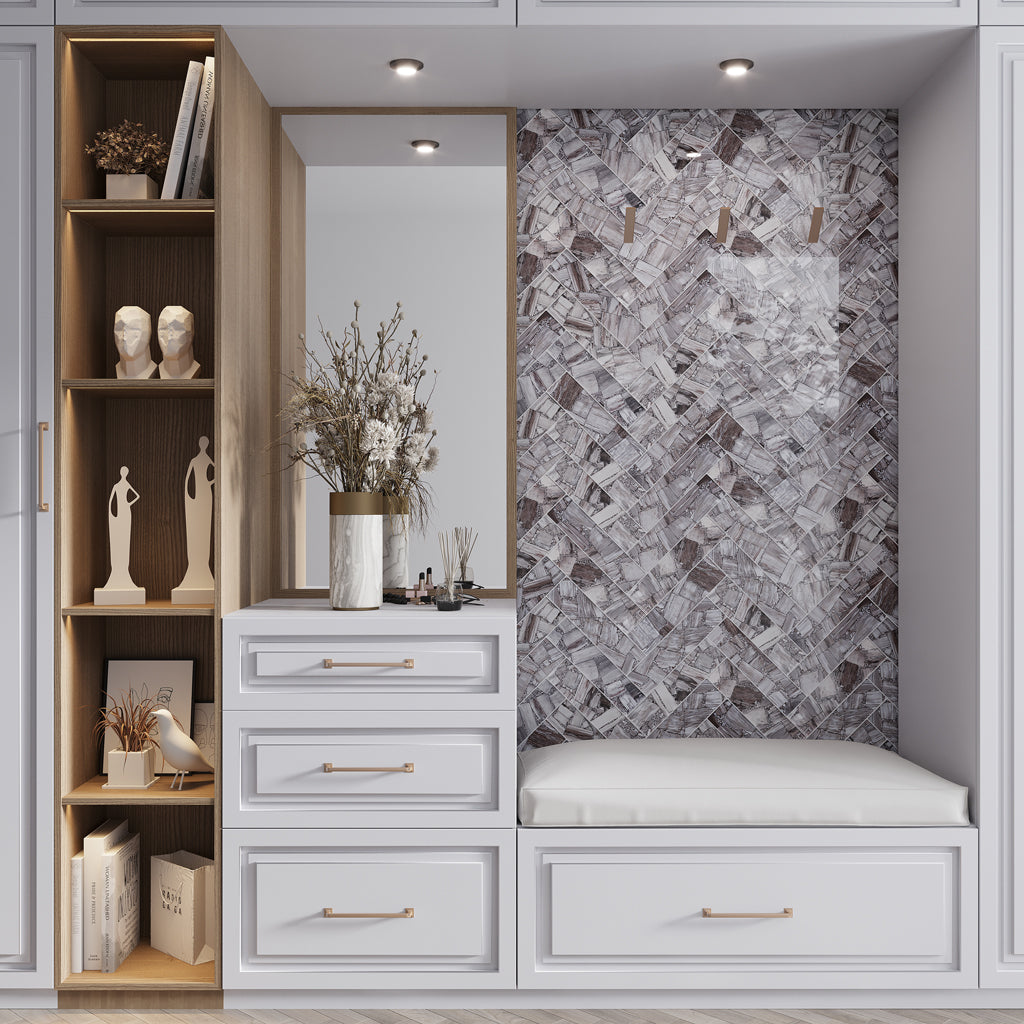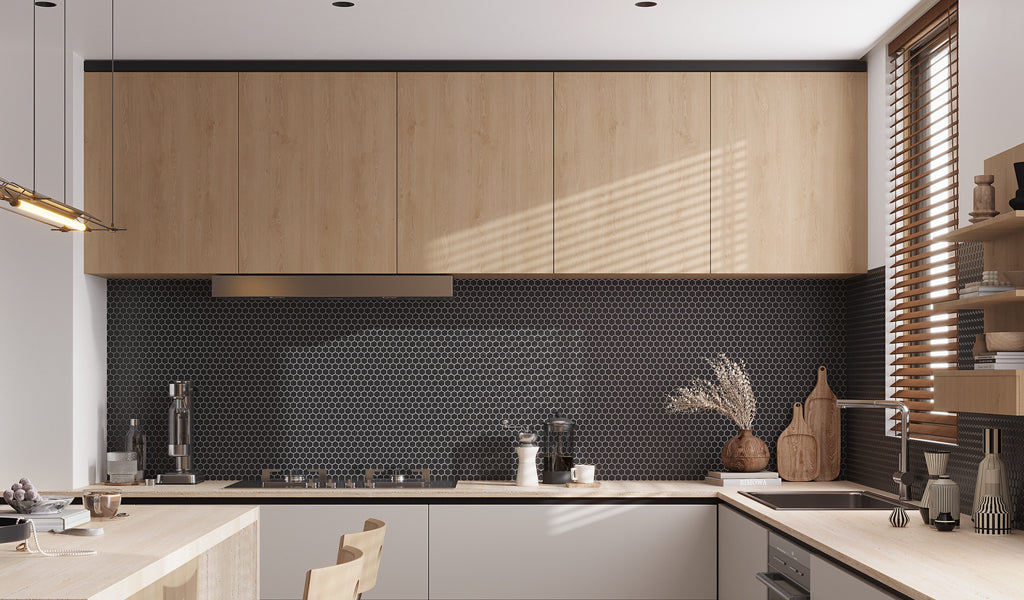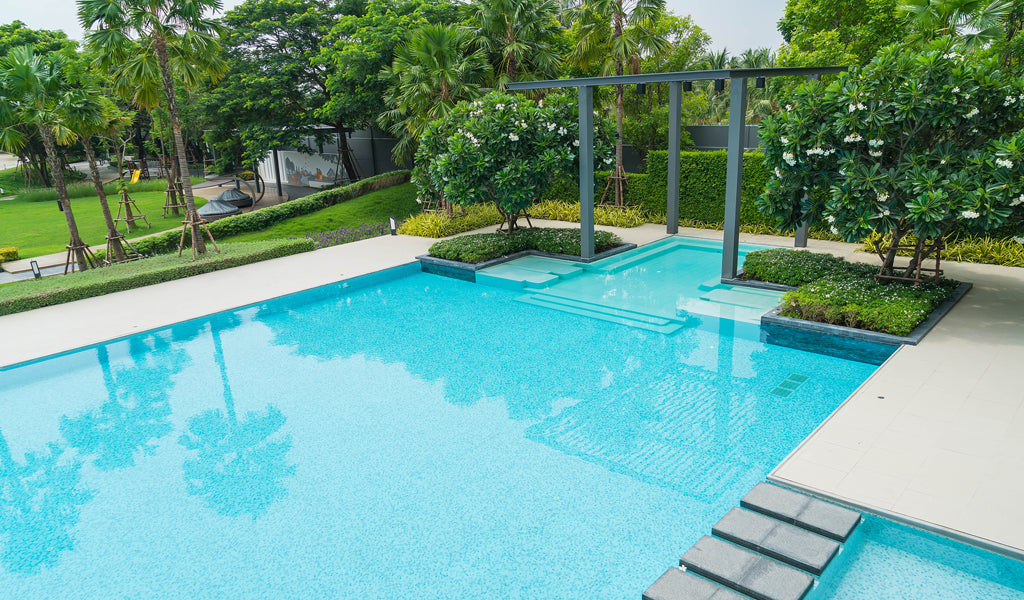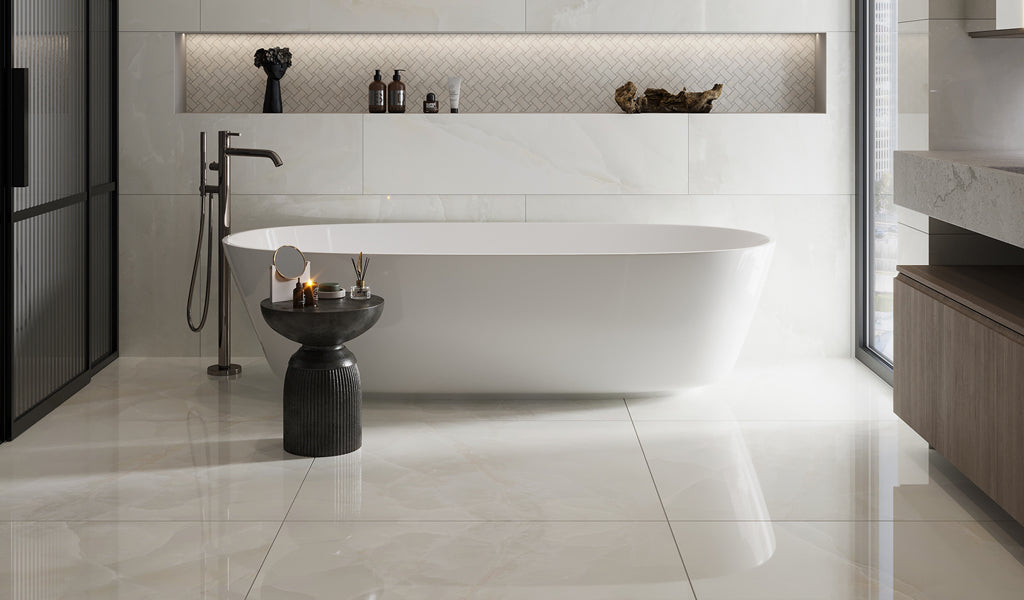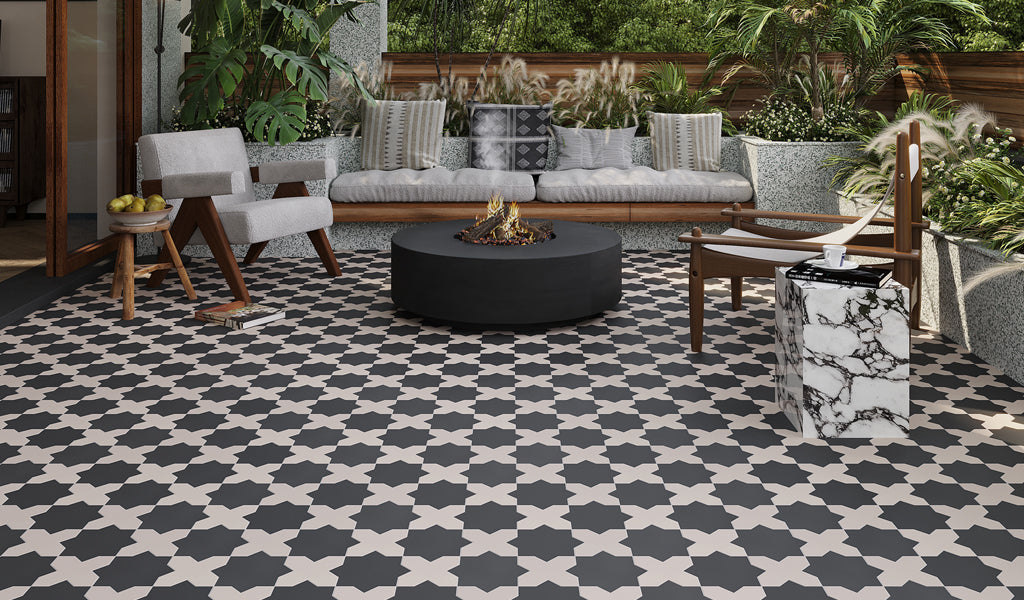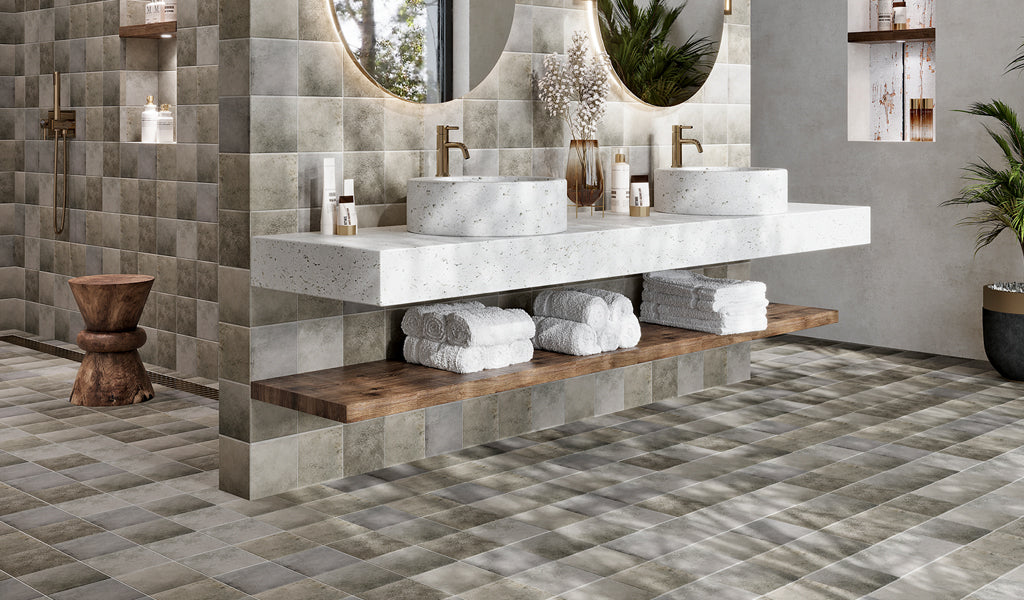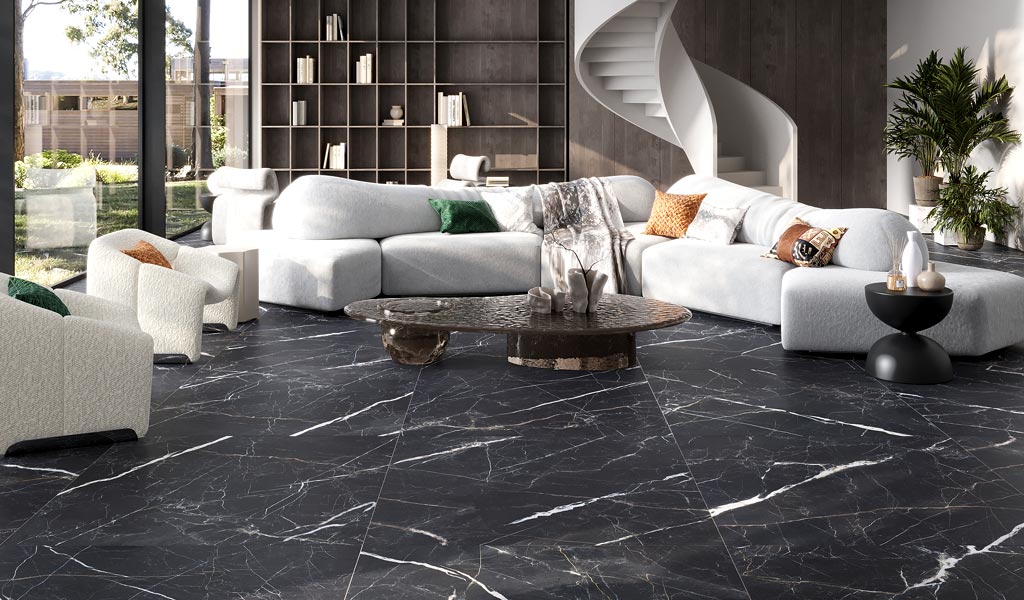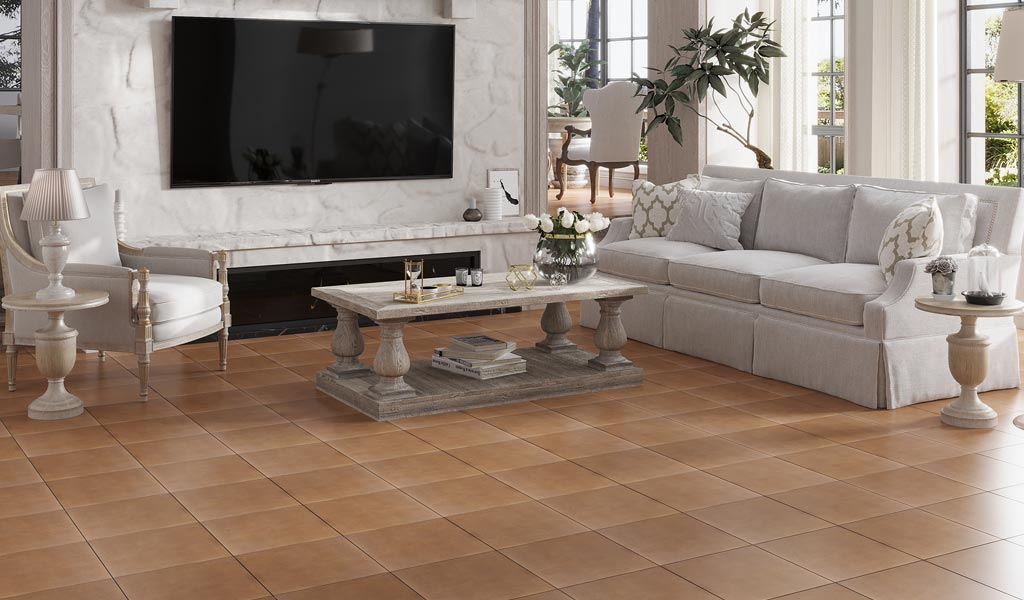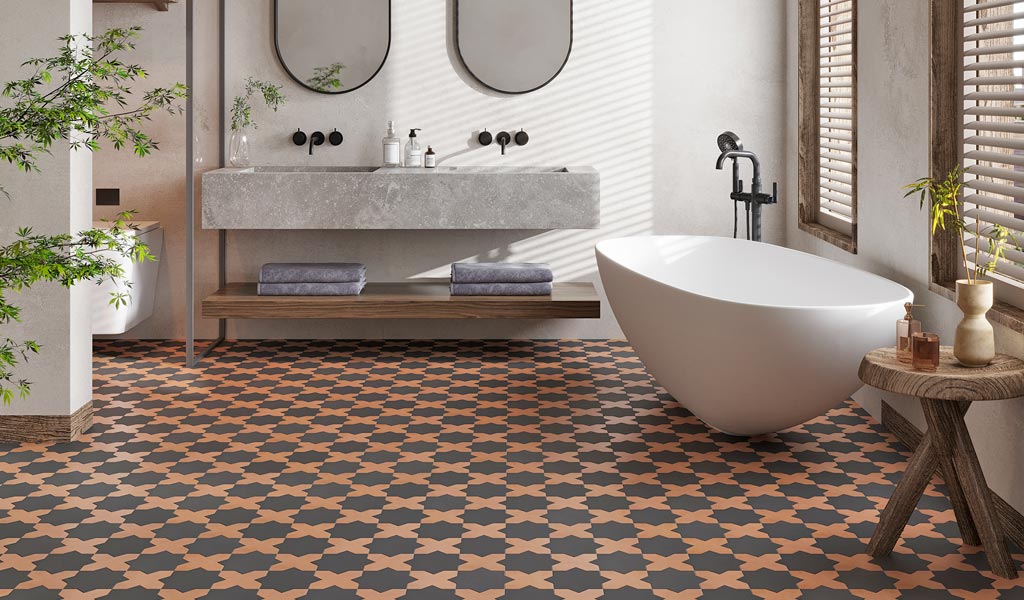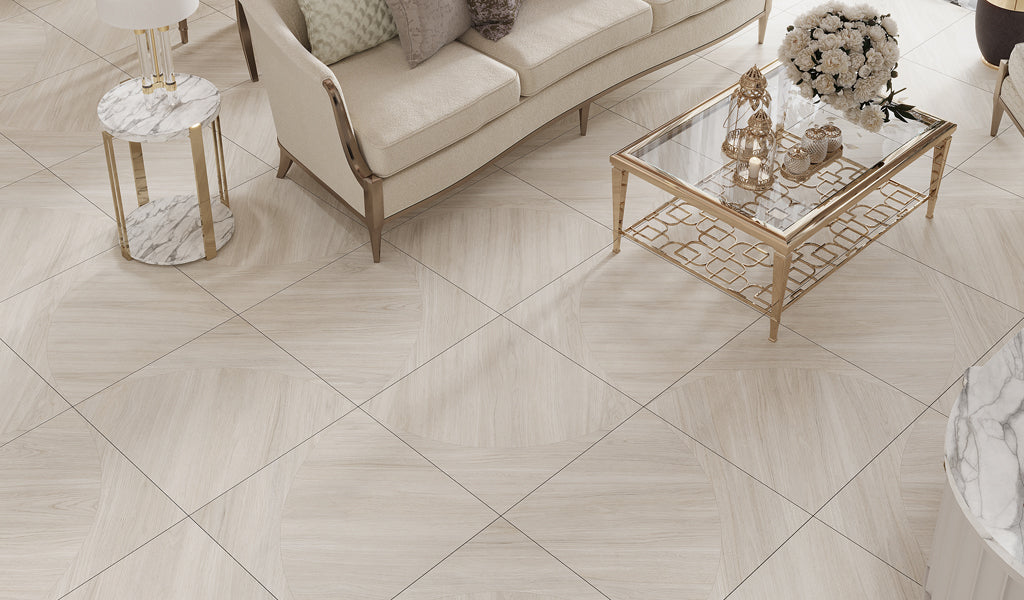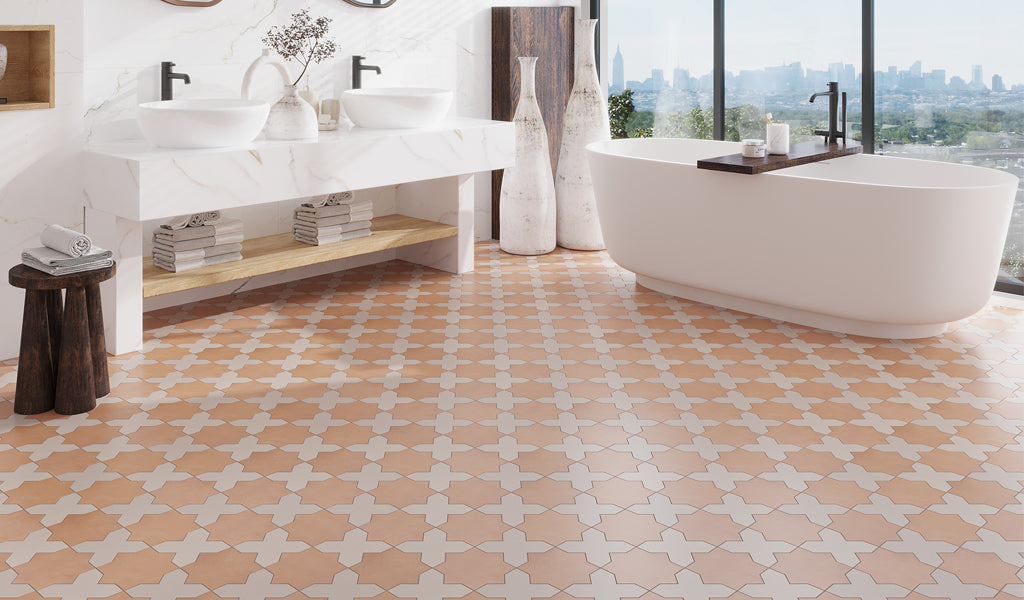What is Subway Tile?
Oct 29, 2025
What is subway tile and why is it so popular? With roots tracing back to the 1900s New York City subway system, this classic tiling style has become an iconic feature in our homes. This guide is your go-to resource for all thing subway tile. We’ve included its historical significance, different types available, installation layouts for every room, and best care and maintenance practices. Find it all here!
Key Takeaways
- Subway wall tiles originated in the early 1900s in New York City subways for durability and ease of maintenance.
- The standard subway tile size is 3"x6", but many other sizes are now available to suit different scopes of design.
- These rectangle-shaped tiles come in various materials, colors, sizes, and finishes for versatile decorating.
- Different patterns for subway tile include running bond, vertical stack, herringbone, and basketweave.
- Subway tiles can be used on various surfaces and with any interior design style, such as fireplace surround, kitchen backsplash, bathroom walls, or shower floors.
- Both matching and contrasting grout color choices can help customize the tile’s look.
The simple rectangular shape and clean lines of subway ceramic tiles offer endless possibilities for customization and design. Whether you're a homeowner embarking on a full overhaul or a décor enthusiast looking for fresh inspiration, you’ll see just how these tiles have progressed far beyond their practical origins.
What Does Subway Tile Look Like?
In the realm of design, few elements have made a lasting impression quite like the subway tile. Its rich history dates back to the early 20th century, where it was born out of necessity for a massive expansion of the New York City subway system (hence why it is called subway tile). At the time, the task was straightforward: to create a bright, durable, and easily cleanable wall covering for the city’s dimly lit and bustling subway stations. The 3x6 subway tile laid horizontally with a 50% offset gained instant success, famed for its practicality, clean look, and the illusion of spaciousness it created.
These neat white rectangles outperformed the more common materials of the day. Soon after, they made their way into private residences, hospitality, wellness centers, and transportation hubs around the world. Homeowners and designers alike recognized subway tile’s ability to evoke a bright, luminescent aesthetic. The practical perks didn’t hurt either; converting kitchen and bathroom walls with these tiles was cost-effective and easier.
Over 100 years later, the subway running bond pattern still holds strong, proving that simplicity is the key to timeless elegance. The original 3x6-inch glazed ceramic tile has transcended eras and trends, evolving to include various materials, colors, finishes, and proportions. Perhaps it’s its ability to seamlessly adapt to various styles and spaces that makes it a quintessential choice. Whatever the case may be, the subway format is the look everyone keeps coming back to.
Basic characteristics of subway tile include:
Shape: Rectangular
Finish: Glossy, matte, honed, and textured
Color: Originally white, but now available in a variety of colors
Size: Originally 3”x6”, but now available in many dimensions
Texture: Smooth, though modern options include beveled edges, handmade looks, or textured surfaces
Pattern: Originally aligned in a 50% horizontal offset, but now arranged in various patterns, including herringbone and basketweave
Types of Subway Tile
Since its debut in 1904, subway tile has evolved far beyond the classic white ceramic. It comes in a wide variety of materials. Even better, there are many different orientations to place these rectangular adornments, allowing you to go from traditional to modern with just a twist of layout. Here are the most common types:
Ceramic Subway Tile: The traditional 3x6-inch ceramic is what most people imagine when they think of subway tile texture and format. It features a glossy glazed finish and has long been the go-to choice for kitchens, bathrooms, and even laundry rooms. Not only is ceramic subway wall tile easy on the wallet, but it’s also a breeze to keep in tip-top shape and plays well with just about any decor style, from modern farmhouse to industrial.
That said, modern designs have introduced a range of elongated sizes, offering a fresh twist to the standard white subway backsplash. These include tiles measuring 2x8, 2x16, 3x8, 4x12, 3x12, 3x16, 4x16 inches.
The extended formats are aesthetically versatile. They deliver sleeker, more contemporary lines and can feature rippled, grooved, or raised textures to break the monotony of flat surfaces. Take our Bronze 2.5x10 Matte Ceramic Subway Tile, for example. It’s an absolute showstopper that opens up layout possibilities, from stacked and staggered to herringbone.
Porcelain Subway Tile: Porcelain subway tile takes everything we love about classic ceramic and kicks it up a notch. How? It is tougher, denser, and way less absorbent, making it a top contender for high-traffic flooring and areas exposed to water. Case in point: Soft Beige 3x16 Matte Subway Porcelain Tile, a stylish option ready for whatever life throws its way!
And while the traditional format is often associated with glossy finishes, porcelain subway tile textures range from matte to polished. It can mimic terracotta or wood finishes without the high price tag or upkeep. With elongated sizes like 3x16 inches, there are plenty of possibilities to experiment not just with material but with different patterns.
Glass Subway Tile: Want an exquisite upgrade? Glass subway tile imparts a beautiful, luminous quality to the space it adorns. These wall coverings catch and bounce light, making small areas like the powder room and mudroom feel brighter and more open. They come in just about every color you can imagine, from seafoam green to smoky gray, so you can get eclectic or keep things understated.
In addition to their splendor, glass tile in a subway shape is watertight and a perfect fit for moisture-prone areas like kitchen backsplashes and shower surrounds. They come in a range of sizes and price points, but their contemporary appeal is worth the splurge. One thing to keep in mind: glass subway tiles can be a bit trickier to install, as they require special cutting tools and may show adhesive through the back if not handled properly. But in the hands of a skilled installer, the results are nothing short of stunning.
Marble Subway Tile: Marble is one of the more elegant types of subway tile to consider. It brings unique veining and texture to backsplashes, walls, fireplace surrounds, and floors. Natural stone, such as Calacatta tile, adds a layer of depth and dimension, especially in neutral palettes, and pairs nicely with wood, metal, and other natural finishes. Just be aware that marble requires a bit more upkeep and periodic sealing to repel stains. But for that luxurious charm? Totally worth it.
Popular Subway Tile Patterns and Layout
Now that we’ve answered the question “what is subway tile” and taken a peek at the various material options, let’s jump into the fun part. The different patterns for subway tile! This is where the magic happens. There are endless possibilities to get creative and bring a whole new vibe to your space:
1. Brick (Running Bond) Pattern
Originally, subway ceramic tiles were laid in a half horizontal offset, meaning that the middle of the tile aligned with the two tiles above or beneath it to resemble the traditional brickwork. This pattern is simple yet elegant, providing a sense of visual rhythm to vertical surfaces such as kitchen and bathroom backsplashes. However, the staggered running bond can be altered in different offsets and still maintain its classic appeal, such as one-third and one-fourth.
2. Horizontal Stack Pattern
If you're all about clean lines and a crisp, uniform look, a horizontal straight stack eliminates offsets altogether. Unlike the running bond, tiles are aligned perfectly row by row, resulting in a clean, structured finish. The horizontal subway stack pattern works especially well in modern, minimalist, or Scandinavian-inspired settings, where symmetry is desired. Plus, the uninterrupted grout lines help widen narrow walls, making the room feel more open.
3. Vertical Stack or Staggered Pattern
Turn your tile on its side and you get a vertically offset or stacked (grid-like) layout. Orienting vertical tile this way draws the eye upward and creates the illusion of elongated walls. This impression works well in confined areas where a sense of height is appreciated. For a more striking effect, the layout can be rotated by 45 degrees, and you’ll have a diagonal vertical pattern.
4. Herringbone Pattern
When discussing the different patterns for subway tile, none make an exquisite and timeless choice quite like herringbone. With roots going all the way back to 17th- and 18th-century Europe, the herringbone layout experienced a resurgence during the Art Deco period, which lasted from the 1920s through the 1930s. By arranging tiles in a dynamic zigzag shape, like our White 3x6 Polished Subway Calacatta Gold Marble Tile, you create a sense of movement that stretches out the area on which they are placed and makes it seem bigger than it really is. The well-defined grout lines are what make the herringbone pattern even more recognizable and intriguing.
5. Basket Weave Pattern
The basketweave pattern takes its cue from woven baskets, with tiles appearing in vertical and horizontal sets to create a criss-cross effect. This layout enriches surfaces with its layered complexity and adds texture that you can see and feel. Fancy a touch of rustic elegance or artisanal flair? Then the basketweave pattern is up your alley. The way the tiles weave together also works up a playful light and shadow effect, just what’s needed for inviting and intriguing interiors.
Where to Use Subway Tile in Your Home
Subway tile demonstrates remarkable versatility and adds both style and function in various areas of the home, including:
Kitchen Backsplashes: Protect walls from splashes and splatters. Easy to clean and glossy options like Brushed Gold 2x16 Glossy Zellige Subway Ceramic Tile brighten the room.
Bathrooms and Showers: Create moisture-resistant and hygienic surfaces wherever you need them, be it the vanity backsplash, shower wall, or bathtub surround. Slip-resistant porcelain options, such as Earthy Terracotta 3x16 Matte Subway Porcelain Tile, can go on bathroom and shower floors, providing extra grip thanks to a matte finish.
Walls and Fireplace Surrounds: Focal points, such as the fireplace or accent wall, are possible with a unique subway tile texture or layout. Lean to a matte finish for a subdued look or a glossy finish for a sleek highlight. Consider White 4x12 Honed Subway Calacatta Gold Marble Tile as a welcome feature that stuns with its bright white backdrop and catchy veining pattern.
Exterior Spaces: Deliver weather-resistant, easy-to-clean surface treatment for patios and garden surrounds. Designs like Soft Gray 3x16 Matte Subway Porcelain Tile are approved for swimming pool interiors and surrounds.
Numerous Benefits of Subway Tiles
As outlined earlier, these legendary tiles continue to endure through changing design trends, and their numerous benefits are the reason why:
Enhanced Durability: A key strength of subway tiles lies in their resistance to wear and tear and longevity. They are the ideal surface finish for defending against moisture, stains, and scratches while maintaining visual clarity. Porcelain and marble, with their remarkable strength, are approved for high-traffic floors and can withstand the rigors of daily use. As with all tiling materials, it’s important to check the specifications for the approved area of use.
Easy Maintenance: These rectangular wall and floor tiles are easy to care for. Their resistance to mold and mildew makes for a practical pick for bathrooms, kitchens, and other areas where long-term hygiene with minimal effort is important.
Design Versatility: Find a plethora of subway tile textures, colors, and sizes that cater to diverse design styles. Whether your taste leans mid-century, Japandi, contemporary, or everything in between, there’s no shortage of options to bring your vision to life.
Timeless Appeal: The classic look of subway tile represents a perpetual fixture in interior design. Their clean lines and sharp edges lend a touch of sophistication to different settings, spanning from period properties to modern environments.
 Maintenance Tips for Subway Tile
Maintenance Tips for Subway Tile
Even the toughest materials need a little TLC, and subway wall and floor tiles are no exception. With the right care and maintenance, your tiled surfaces will remain in an immaculate state for years.
1. Clean Surfaces Regularly: Use a solution of warm water and a pH-neutral cleaner to remove dust, grease, or soap scum. Avoid acidic or alkaline cleaners like vinegar or bleach, as they can dull finishes or weaken the grout.
2. Seal Tile and Grout Lines: Natural stone like marble is porous and easy to stain, requiring sealing every 1-2 years or sooner in moisture-prone or high traffic zones. Grout should also be sealed regularly to repel liquid stains and prevent discoloration.
3. Tackle Stains Promptly: Address spills and stains as soon as they occur. The longer a stain sits, the tougher it is to clean. In high-use or humid areas where grout discoloration and mildew are a concern, use a soft-bristle brush with a paste of baking soda and water or grout-safe cleaner. Scrub the affected area gently, then rinse with water for a fresh, clean finish.
Conclusion
Subway tiles continue to maintain their status as a preferred design element, and rightfully so. Their broad compatibility positions them as a reliable pick for boundless creativity in traditional and modern interiors. And now that you know what is subway tile, where it’s used, and the variety of materials available, you’re ready to make a confident choice on the best tiles that align with your décor aspirations.
As you move forward with your tile project, the right surface finish can make all the difference. Apollo Tile offers a wide selection of wall and flooring tiles that merge aesthetic clarity with lasting performance. Sign up for our newsletter to get early access to new tile arrivals, plus 5% off on your next order.
Frequently Asked Questions:
1. Can subway tile be used on floors?
Subway tiles are typically designed for wall applications such as backsplashes. However, there are floor-rated options made from porcelain and marble, able to endure bustling footsteps without compromising quality.
2. How long does subway tile last?
When installed and maintained properly, they can last for decades, making them a reliable solution for various uses.
3. How do you choose the right grout color for subway tile?
Consider the desired look. Grout color that closely matches the tile creates a clean, seamless appearance, while contrasting color adds a dynamic feel and highlights the tile pattern even more.
4. Can subway tile work in high-moisture areas like the shower?
Shower-rated subway tiles can go on both walls and floors. They resist moisture and regular care helps keep mold and mildew away.
5. What’s the difference between beveled and flat subway tile?
A beveled tile has a sloped, angled edge with a three-dimensional effect, while a flat tile has a simple, flat surface with clean, sharp lines.
6. What finish is best for subway tiles, glossy or matte?
Both glossy and matte finishes work well with subway tiles, offering unique sets of benefits. A glossy wall surface brightens the area and is easier to wipe clean. A matte surface offers a softer, more understated look and hides scratches better, making it suitable for active zones like the kitchen.
7. Can you install subway tiles yourself or do you need a professional?
DIY installation is possible with the right tools and for small spaces. For expansive areas or if you’re unsure about cutting and aligning tiles, it’s advised to enlist a skilled professional for the best results.
8. How much does it cost to install subway tile?
Costs for installing subway tiles depend on material, size of the area, and labor. On average, professional installation can run between $7 and $15 per square foot, material included. DIY can lower costs, but you’ll still need to factor in tools and supplies.








